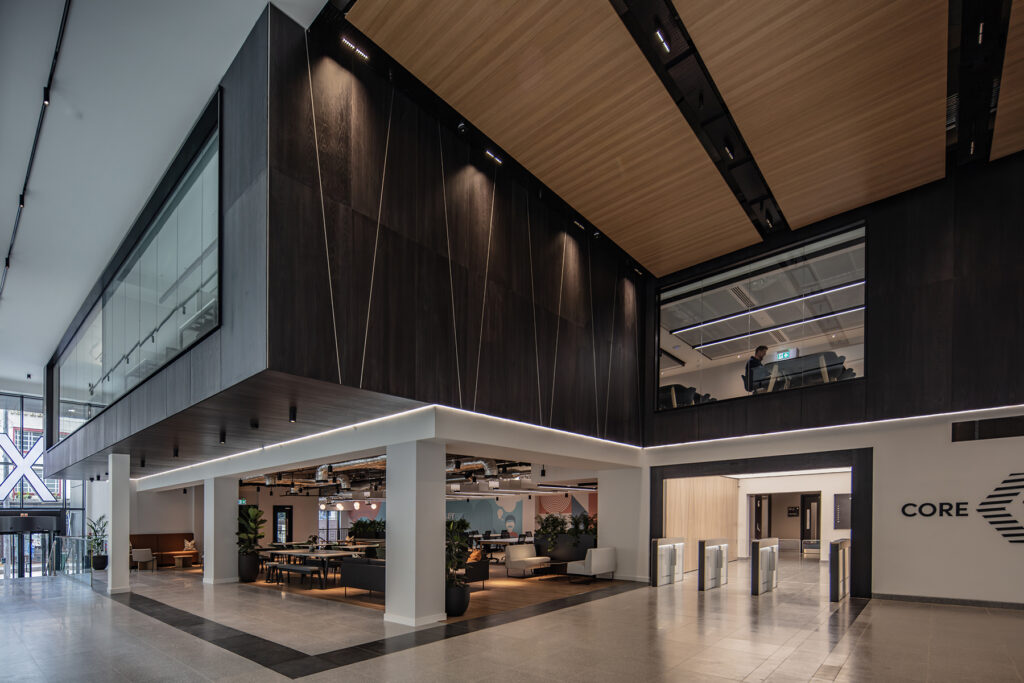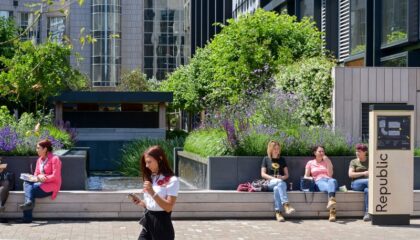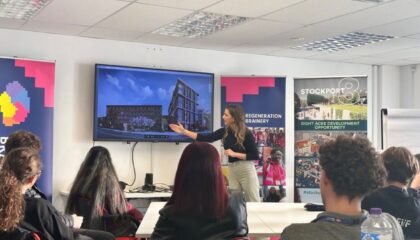Commercial acumen is what’s required to drive the necessary rate of retrofit, Hedley Jones, Partner and Head of ESG Refurbishment & Development, writes for BE News.
Refurbish, repurpose, retrofit. The terminology and triggers for these projects may change over time – change of use, repositioning of assets, meeting occupier demands, improving energy efficiency, carbon reduction, statutory compliance. Ultimately the rationale remains the same: to secure a building’s commercial viability for the future, ensuring its liquidity for both leasing (by meeting occupier demands) and sale (by meeting investor standards).
Hitting statutory, environmental or market targets are essentially just the tactical levers to meet the overall strategic objective. To prevent assets becoming stranded without a viable use or market, by identifying and implementing an effective business plan to make the asset fit for the future.
Of course, now there is a greater imperative influencing this commercial objective. If we don’t tackle climate change, talk of income streams, yields and returns becomes irrelevant.
Apply a commercial lens to meet the challenge
Now more than ever, identifying commercial solutions that make previously unviable investments fit and feasible for the future is so important. Office agency Knight Frank estimates that the rate of retrofit needs to quadruple to over 500m sq. ft per annum to meet the existing MEES target of 2030. But MEES is just a (notional) minimum standard – one that many occupiers’ and investors’ requirements already exceed. So the need, or opportunity, is actually far greater. It is estimated that around 70% of the commercial building stock was constructed before 2000, so the rate of retrofit required to improve energy efficiency is clear.
As an industry, we have the creativity, ingenuity, and tenacity to tackle the challenge – we shouldn’t be ashamed of applying a commercial lens in order to meet it. Without a financial engine and sound economics, the required rate of change simply won’t happen. We have to find ways to make existing solutions like mass timber construction and heat pumps more widely feasible and adoptable, while encouraging innovation in the supply chain and the further development of new technologies.
Retrofit first, not retrofit only
Merely promoting a green agenda, making unsubstantiated claims, or believing green badges tick the box, will do more harm than good. We have to examine each building on its individual terms to identify the schemes that will measurably reduce embodied carbon, lower energy intensity while simultaneously delivering the business plan of the building. Retrofit may not always be the optimal pathway, but it should always be considered first.
For those that see this as an opportunity and looking to buy, that starts with the pre-acquisition due diligence. Increasingly, our advice here is driven by identifying the opportunities to drive environmental performance, set against the potential risks of not doing so, and evaluating this within the context of the intended business plan.
We have data on our side. Carbon modelling (both operational and embodied) enable early option studies to consider what delivers the best overall carbon outcomes before key design decisions are made, allowing carbon to be part of the design process and viability testing. Knowledge from previous projects can help spark the process and our Pre-Redevelopment Audits and Whole Life Carbon Assessments, that form part of our feasibility advice, demonstrate the value of data to facilitate carbon and cost reduction through the use of less material. Addressing this early in a project is key to avoid heading off down the business-as-usual route.
Finally, we have to do this together. “Radical collaboration” is a phrase I first heard championed by Sarah Ratcliffe of the Better Buildings Partnership, while the work of groups like the Green Property Alliance and UK Net Zero Buildings Standard in bringing together multiple stakeholders and areas of expertise from across real estate, is essential to find the solutions needed. As an ESG Project Advisor, I collaborate closely with project teams and technical consultants throughout a project’s lifecycle, challenging them to look beyond statutory minimums and maximise every opportunity and innovation to drive tangible ESG performance in line with the project brief (and beyond where a business case can be found with the client).
Occupier demands and sustainability requirements converge
Fortunately, occupier demands and sustainability requirements are converging, so meeting the latter often satisfies the former. The nature of workplace design, quality of amenity and level of building performance that occupiers and their staff most value, naturally lend themselves to improved environmental performance and creating a green premium for investors.
At 10 Brindleyplace, Birmingham (pictured above) the city’s largest office refurbishment scheme completed this year. Project managed by our Venture team, the state-of-the-art cycle amenities for up to 100 cyclists and 24 EV charging bays are the quality of amenity that occupiers require, yet will facilitate the behavioural change needed to significantly reduce the impact of commuting staff. In addition, the reduction in heating and cooling demands achieved through the thermal insulation, air tightness, glazing ratios and glass specifications included in the design, will achieve estimated energy savings for the occupiers of 65% compared to equivalent-sized typical buildings, equating to 658 tonnes of CO2 per year.
While heritage buildings can present even greater challenges, the retrofit-first principle is even more important in these cases. We’ve seen first-hand what can be done. The Hanover building in Manchester’s NOMA district saw an unoccupied former Co-op office and drapery warehouse and beautiful example of the city’s Baroque architecture, sensitively converted into modern energy-efficient office space with market-leading amenities that was let to Amazon. A clear example of making sure buildings from the previous century meet the needs of modern occupiers.
The goal of saving the planet from the effects of climate change is on a different scale to any other. But only by applying the commercial real estate industry’s keen-eyed commercial principles to renewing the stock of existing commercial buildings, will the market move quickly enough to deliver the scale of change needed.
Hedley Jones is Head of ESG (Refurbishment & Development) at Workman and a Chartered Building Surveyor with 30 years’ experience across all major property sectors. Hedley acts for leading institutional investors, private property companies and overseas investors, advising on ESG targets and initiatives including carbon reduction strategies within multi-million-pound retrofit, refurbishment and new-build projects across the UK.

Read more about Workman’s ESG services.




